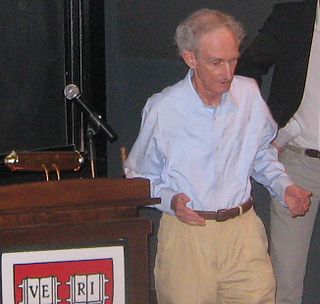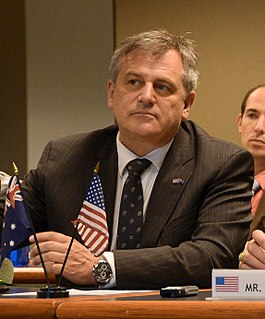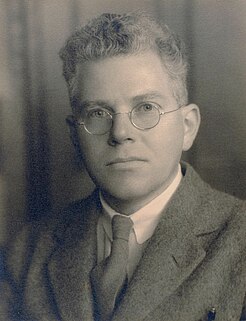
Robert McCredie May, Baron May of Oxford, HonFAIB is an Australian scientist who has been Chief Scientific Adviser to the UK Government, President of the Royal Society, and a Professor at the University of Sydney and Princeton University. He now holds joint professorships at University of Oxford and Imperial College London. He was also a crossbench member of the House of Lords from 2001 until his retirement in 2017.

Sir William Ian Clunies Ross was an Australian veterinary scientist. He has been described as the 'architect' of Australia's scientific boom, for his stewardship of the Commonwealth Scientific and Industrial Research Organisation (CSIRO), the Australian scientific organisation.
Emeritus Professor Nancy Fannie Millis AC MBE FAA FTSE was an Australian microbiologist who introduced fermentation technologies to Australia, and created the first applied microbiology course taught in an Australian university.
Sir Arvi Hillar Parbo AC FTSE is a business executive who was concurrently chairman of three of Australia's largest companies.

David Morritz de Kretser AC is an Australian medical researcher who was the 27th Governor of Victoria from 2006 to 2011.
Hugh Francis Durrant-Whyte is a British-Australian engineer and academic. He is known for his pioneering work on probabilistic methods for robotics. The algorithms developed in his group since the early 1990s permit autonomous vehicles to deal with uncertainty and to localize themselves despite noisy sensor readings using simultaneous localization and mapping (SLAM).
Adrienne Elizabeth Clarke, is Professor Emeritus of Botany at the University of Melbourne, where she ran the Plant Cell Biology Research Centre from 1982–1999. She is a former chairman of the Commonwealth Scientific and Industrial Research Organisation, former Lieutenant Governor of Victoria (1997–2000) and former Chancellor of La Trobe University (2011–2017).
Sir David Ronald Zeidler was an Australian chemist and industrialist.
Min Gu (顾敏) is an elected fellow of the Australian Academy of Science (FAA) (2007), the Australian Academy of Technological Sciences and Engineering (FTSE) (2006), the Australian Institute of Physics (FAIP) (1998), the Optical Society of America (FOSA) (2004), the International Society for Optical Engineering (FSPIE) (2003), the Institute of Physics (FInstP) (2008), and the International Institute of Electrical and Electronics Engineers (FIEEE) (2015), as well as the elected Foreign Fellow of the Chinese Academy of Engineering (2017).

John William Boldeman is an Australian nuclear scientist and winner of many scientific awards and medals, including an ANZAAS Medal in 2007, the Clunies Ross Lifetime Achievement Award, as well as an being officer of the order of Australia. He was born in Longreach, Queensland, the eldest of seven children born to Harold and Eileen Boldeman. He spent much of his childhood in Maryborough, Queensland and attended the Maryborough Christian Brothers High School and then Nudgee College in Brisbane. He went on to study physics at the University of Queensland and joined the then Australian Atomic Energy Commission on graduation, continuing his studies in association with his work. Dr Boldeman worked at the AAEC, and then ANSTO, for 42 years, rising to the position of Director of Physics. He was awarded a PhD from Wollongong University, and a D.Sc from University of New South Wales in 1984. He organised the purchase and installation of the Antares accelerator in 1988 at ANSTO.

Alexander "Alex" Zelinsky, is an Australian computer scientist, systems engineer and roboticist. He was the Chief Defence Scientist of Australia from March 2012 until November 2018. His career spans innovation, science and technology, research and development, commercial start-ups and education. As Chief Defence Scientist he led Defence Science and Technology for Australia's Department of Defence. Since November 2018, he has been Vice-Chancellor and President of the University of Newcastle.

David Henry Solomon is an Australian polymer chemist. He is best known for his work in developing Living Radical Polymerization techniques, and polymer banknotes.
Susan Margaret Pond is an Australian scientist and technologist active in business and academia, and is recognised for her contributions to medicine, biotechnology, renewable energy and sustainability. She was the first woman to be appointed to a Personal Professorial Chair in the Department of Medicine at the University of Queensland, the first woman to receive the Wellcome Australia Medal, and the first female Managing Director of a Johnson & Johnson Company in Australia. In February 2017 – May 2018 she is the Director of Sydney Nano.
San Hoa Thang is a Vietnamese Australian chemist.
Ezio Rizzardo is a polymer chemist at the Australian research agency CSIRO.








